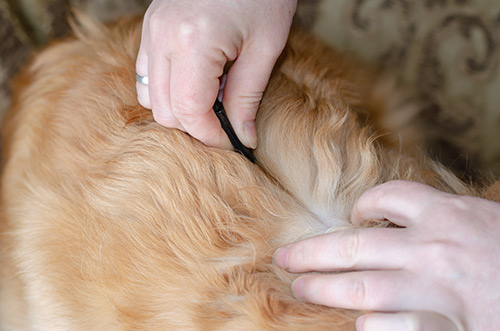
Anyone who has a television knows how easy it is to buy the right car insurance. Finding the right marine insurance is not so easy. This article presents an overview of the three most common types of marine insurance.
Doctrine of Uberrimae Fidei
Unlike other types of insurance, marine insurance is subject to the longstanding doctrine of uberrimae fidei or the doctrine of utmost good faith. Under the doctrine, a person applying for marine insurance is obligated to disclose all information that may be material to the risk, whether or not the insurer asked for it.
Material information is information relevant to the insurer’s decision to underwrite the risk. The information solicited in the application is presumptively material. Under federal maritime law, the failure to disclose material information or the misrepresentation of material facts, whether intentional or not, allows a marine insurer to rescind the policy. State law is not consistent on the effect of a misrepresentation or non-disclosure of information. Under California statutory law for example, an insurer may rescind a marine insurance policy if the insured has intentionally failed to disclose or has misrepresented facts, whether or not material to the risk.
Depending on the marine operation, several different types of marine insurance may be required. The three most common types of marine insurance are hull, cargo, and protection and indemnity (P&I). There is no such thing as a standard marine insurance policy and not all marine insurance companies insure against the same risks in the same type of policy. Marine insurers may use their own forms or may incorporate forms issued by industry groups such as the American Institute of Marine Underwriters.
Hull Insurance
Hull insurance generally covers physical loss of or damage to a vessel. There are various types of hull policies depending on the type of vessel being insured. Different policies exist for yachts (private pleasure craft), fishing vessels, tugs and barges, large commercial vessels such as containerships, and passenger carrying vessels. The coverage may apply for a specified period of time or a single voyage.
Coverage under a hull policy is either on an “all-risk” or “named perils” basis. An “all-risk” policy covers all risks of physical loss or damage to a vessel from an external cause unless otherwise excluded. Common exclusions include wear and tear, marine borers, ice, and improper/inadequate maintenance. A “named” perils policy covers physical loss of or damage to a vessel but only from the perils named in the policy. The traditional named perils include heavy weather, fire, piracy and similar sea perils. Additional perils are covered under the “Inchmaree” clause, named after a late nineteenth century British case in which the need for coverage for non sea-related perils was recognized. The Inchmaree clause provides coverage for, among other things, loss or damage due to the negligence of crew, charterers, and repairers, latent defects, and accidents in loading, handling, and discharging cargo.
Hull policies often contain navigational limits resulting in no coverage if the vessel is navigated outside of those limits. Some hull policies confine coverage to those times when the insured vessel is in port, otherwise known as “port risk”. Hull policies may also limit coverage to a certain time of the year and require the insured vessel to be “laid up” during the rest of the year.
Hull policies typically provide coverage for the cost to salvage the insured vessel and the expenses incurred to prevent further damage after a casualty, known as “sue and labor” expenses. A hull policy also covers the liability of a vessel owner arising from a collision between the insured vessel and another vessel.
Hull policies are “valued” policies in which the insurer and the vessel owner agree what the insured vessel is worth. The vessel’s value is stated in the policy and that value forms the limit of what the insurer will pay in the event the vessel becomes a total loss.
Cargo Insurance
Cargo insurance covers physical loss of or damage to goods while in transit. Generally cargo insurance applies from the time the insured goods leave the warehouse at the point of origin until they arrive at the destination warehouse and during different modes of transportation including vessels, trucks, and railroads. Like hull policies, cargo policies insure goods on two bases, “all-risk” and “named perils” and are as varied in their terms as the commodities they insure. Cargo policies may contain special conditions for specified commodities such as refrigerated cargo, automobiles, and used goods.
Cargo policies can be issued to cover a single shipment of goods or as an “open policy” that covers multiple shipments made by the insured over a period of time. If goods are sold on a CIF (cost, insurance & freight) basis, a certificate of insurance may be issued under the open cargo policy and endorsed to the buyer as part of the transaction. Open cargo policies may also be issued to freight forwarders who are allowed to provide insurance for their customers’ goods. Under those circumstances, the freight forwarder issues an insurance certificate on its own cargo insurer’s form, to its customer.
Cargo is typically insured for its invoice value, freight if paid, and other paid charges plus 10 percent. This valuation is thought to approximate the amount needed to place the cargo owner in the same position he would be in had the cargo arrived at destination in sound condition. Cargo policies also cover “sue and labor” expenses or the cost to minimize or avoid further damage to the cargo such as the cost to recondition or re-package the goods.
Like hull policies, cargo policies may have geographic restrictions.
Protection and Indemnity Insurance
P&I insurance covers the liability of a vessel owner arising out of his ownership of the insured vessel. It covers the vessel owner’s liability for injury to or death of persons aboard the insured vessel such as crewmembers, passengers, or stevedores. It also covers liability for injuries or death suffered by persons on shore caused by the negligence of the vessel’s crew.
In addition to liability for bodily injury or death, P & I insurance covers the vessel owner’s liability for damage caused by the insured vessel to fixed structures such as bridges and docks. It also covers liability for damage to other vessels except when caused by a collision with the insured vessel, which liability is covered under the hull policy. In the case of a cargo-carrying vessel, P&I insurance covers liability for cargo loss or damage.
P&I insurance covers the expenses incurred for the removal of the wreck of the insured vessel when compulsory by law and under federal statutory law, a wreck must be removed even if its owner was not at fault in causing the wreck. Further, if the vessel owner is sued, the expenses incurred to defend the suit are covered.
Some P&I policies cover the liability of the vessel owner for pollution but many exclude such coverage. Vessel owners can buy separate pollution liability insurance to protect themselves if the P & I policy excludes such coverage.
P&I coverage is often part of the marine insurance policy issued for a vessel. However, some vessel owners may choose to become members of a P&I Club. A P&I Club is a mutual funded by its members to provide P&I coverage for each other. The P&I Clubs have rules dictating the scope of coverage provided to the members instead of a policy.
Because many marine businesses are multi-faceted, marine insurers commonly offer package policies that combine coverages for a variety of risks. A Marina Operator’s Package policy is an example of such a policy and usually covers the insured’s vessels, docks, and shoreside structures as well as the insured’s liability to others arising out the business’s operations. It may also cover loss of business income and pollution risks.
Persons engaged in marine-related businesses should make sure they have appropriate and adequate insurance for those businesses. Several different types of marine insurance may be needed. A marine business should always work with an experienced marine insurance broker to assess its needs and obtain the necessary coverages.
Contact Lallis & Higgins Insurance for more information on Marine Insurance.
Source: bullivant.com




